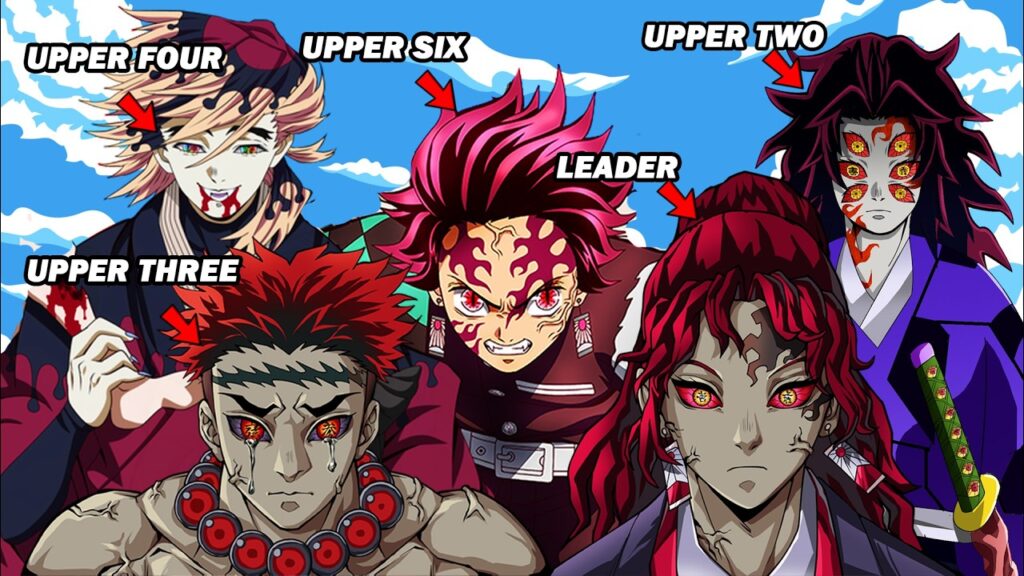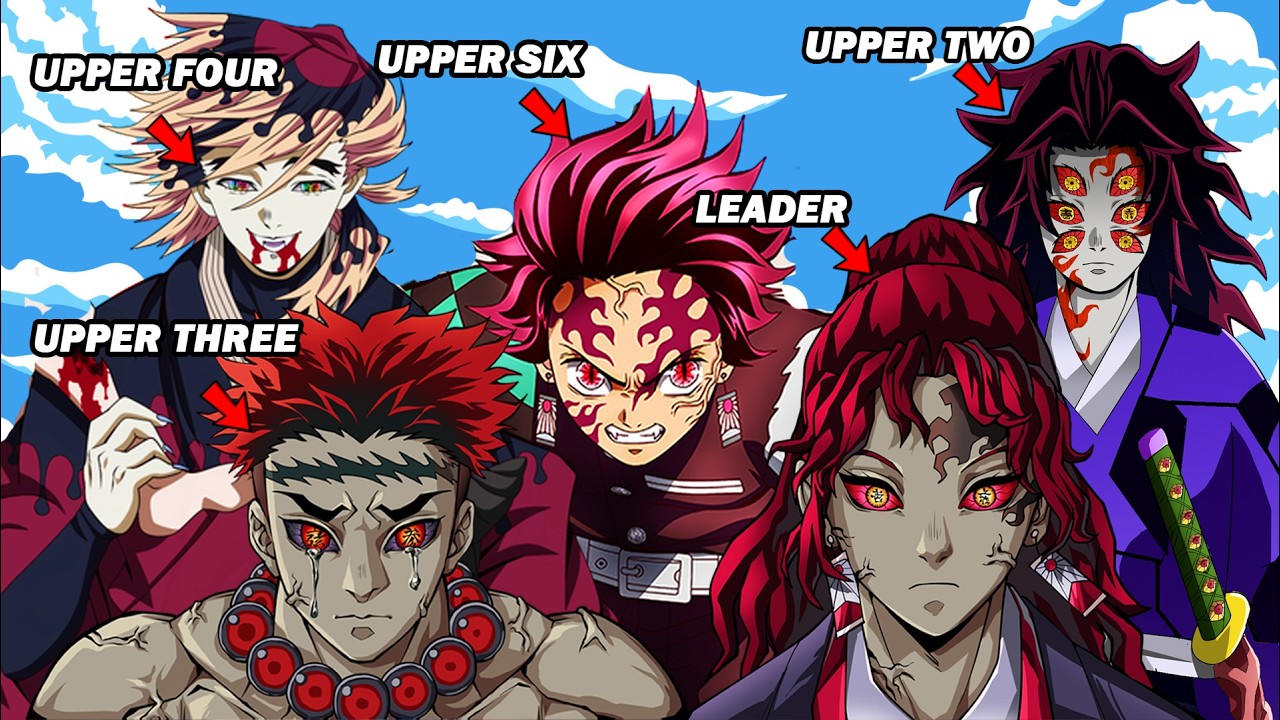
Decoding the Demon Slayer Corps: Unraveling the Mystery of Lower Moon Five
In the captivating world of Demon Slayer: Kimetsu no Yaiba, the Demon Slayer Corps stands as humanity’s last line of defense against the bloodthirsty demons that lurk in the shadows. Among these demons, the Twelve Kizuki, directly serving Muzan Kibutsuji, hold immense power and pose a significant threat. Within the Twelve Kizuki lies a hierarchy of strength, divided into the Upper and Lower Moons. This article delves into the enigmatic realm of the Lower Moons, specifically focusing on Lower Moon Five, exploring their role, abilities, and ultimate fate within the narrative. The story of Lower Moon Five is a tragic one, highlighting the ruthless nature of Muzan and the desperation of demons clinging to life and power. Understanding Lower Moon Five provides crucial insight into the power dynamics and overall themes of the series.
The Hierarchy of the Twelve Kizuki
The Twelve Kizuki are the strongest demons under Muzan Kibutsuji’s command, each marked with a number indicating their rank. The Upper Moons, numbered from One to Six, possess incredible power and have remained relatively unchanged for centuries. Their strength is so immense that they are often the primary antagonists in major arcs. The Lower Moons, also numbered from One to Six, are significantly weaker and more expendable in Muzan’s eyes. This stark contrast in power and treatment underscores the cutthroat nature of the demon world.
Introducing Lower Moon Five
Lower Moon Five, whose identity is revealed as Rui in the anime, plays a crucial role in demonstrating the power structure and the consequences of failure within the demon ranks. Rui’s story is intertwined with the horrors of Muzan’s control and the constant threat of being deemed useless and eliminated. Understanding his background and abilities is essential to grasping the complexities of the Demon Slayer world. He is the leader of the Spider Family, a group of demons he has coerced into playing the roles of his family members, each with altered appearances and abilities to fit their designated roles.
Rui: The Spider Demon and His Twisted Family
Rui’s backstory is a tragic tale of sickness and desperation. Originally a frail human boy, he was granted demonic powers by Muzan to cure his ailment. However, this transformation came at the cost of his humanity. He then became obsessed with creating a “perfect family,” which led him to form the Spider Family. This family consisted of other demons, each forced to adopt a specific role—mother, father, siblings—and subjected to Rui’s twisted and abusive control. The family’s dynamic is a disturbing reflection of Rui’s distorted perception of love and connection. The Spider Family’s presence adds a layer of psychological horror to the narrative, highlighting the devastating impact of Muzan’s influence on those who become demons.
The Spider Family Members
- Mother Spider Demon: Initially beautiful, she was forced by Rui to take on a grotesque appearance. She was also constantly abused, living in perpetual fear.
- Father Spider Demon: A hulking, monstrous figure tasked with protecting the family. He was often violent and brutal, embodying Rui’s distorted view of a father figure.
- Elder Brother Spider Demon: Vain and arrogant, he possessed the ability to manipulate his body into a cocoon.
- Elder Sister Spider Demon: Manipulative and deceptive, she used her webs to control humans and demons alike.
Rui’s Powers and Abilities
As Lower Moon Five, Rui possessed several formidable abilities centered around his spider-like nature. His primary power was the ability to create and manipulate incredibly sharp and durable threads. These threads were strong enough to slice through almost anything, including demon slayers’ swords. He could also use these threads to create webs and traps, making him a dangerous opponent in his forest domain. He was particularly adept at controlling and manipulating his threads with precision, allowing him to ensnare and dismember his victims with ease. These abilities made him a formidable opponent, requiring significant effort from the Demon Slayers to overcome.
The Battle Against Tanjiro and Nezuko
The confrontation between Tanjiro, Nezuko, and Rui is a pivotal moment in the series. Tanjiro and Nezuko encounter the Spider Family while investigating strange occurrences on Mount Natagumo. The battle against Rui is particularly challenging, as Tanjiro struggles to overcome Rui’s sharp threads and powerful attacks. It is during this fight that Nezuko’s Blood Demon Art, Exploding Blood, is awakened, proving crucial in turning the tide. The fight showcases the resilience of Tanjiro and Nezuko, as well as the bond between them, which allows them to push beyond their limits. [See also: Tanjiro’s Journey to Become a Demon Slayer]
Rui’s Defeat and Muzan’s Displeasure
Ultimately, Rui is defeated by Giyu Tomioka, the Water Hashira, who effortlessly cuts through Rui’s threads with his superior swordsmanship. Rui’s defeat highlights the vast difference in power between the Lower Moons and the Hashira. Following Rui’s death, Muzan summons the remaining Lower Moons. Displeased with their weakness and failure, Muzan executes all but one of them, demonstrating his ruthless and unforgiving nature. This event underscores the expendability of the Lower Moons and the constant pressure they face to maintain their positions. The fate of the Lower Moons serves as a cautionary tale about the dangers of serving Muzan. Muzan’s decision to eliminate the Lower Moons signals a shift in the narrative, focusing on the more powerful Upper Moons as the primary antagonists.
The Significance of Lower Moon Five
While Lower Moon Five might not be the strongest demon, his character and story are crucial to the overall narrative of Demon Slayer. He showcases the tragic consequences of Muzan’s influence, the desperation of demons clinging to power, and the vast power difference within the demon ranks. Rui’s twisted family dynamic also adds a layer of psychological depth to the series, exploring themes of abuse, control, and the distortion of love. His defeat serves as a turning point, highlighting the growing strength of the Demon Slayers and setting the stage for future conflicts with the more formidable Upper Moons. The story of Lower Moon Five is a reminder of the horrors that demons inflict and the sacrifices made by those who fight against them. The encounter with Lower Moon Five also forces Tanjiro and Nezuko to confront their own limitations and push themselves to become stronger. The narrative arc involving Lower Moon Five underscores the importance of family bonds and the strength that can be found in protecting loved ones. [See also: The Power of Family in Demon Slayer]
The Impact on Tanjiro and Nezuko’s Journey
The battle against Lower Moon Five and the Spider Family has a profound impact on Tanjiro and Nezuko. It forces them to confront their own weaknesses and push beyond their limits. Nezuko’s awakening of her Blood Demon Art is a direct result of the desperate situation they face against Rui. The experience also strengthens their bond and reinforces their determination to protect each other. The encounter with the Spider Family serves as a stark reminder of the cruelty and suffering that demons inflict upon humanity, fueling their resolve to continue fighting. This encounter also highlights the importance of teamwork and the support that Tanjiro and Nezuko receive from their allies. The lessons learned from this battle are carried forward throughout their journey, shaping their growth and development as demon slayers.
Analyzing Muzan’s Leadership Style
The treatment of Lower Moon Five and the subsequent elimination of the other Lower Moons provides insight into Muzan Kibutsuji’s leadership style. He is portrayed as a ruthless and unforgiving leader who demands absolute obedience and perfection from his subordinates. Failure is not tolerated, and those who are deemed weak or useless are quickly disposed of. This autocratic style of leadership creates an atmosphere of fear and paranoia among the demons, constantly pushing them to strive for greater power. Muzan’s actions demonstrate his complete disregard for the lives of his subordinates, viewing them merely as tools to achieve his own goals. This ruthless approach contrasts sharply with the values of the Demon Slayer Corps, who prioritize the protection of human life and the eradication of demons. [See also: Muzan Kibutsuji: The Ultimate Antagonist]
Conclusion: The Legacy of Lower Moon Five
In conclusion, while Lower Moon Five may not be the most powerful demon in Demon Slayer, his story is a significant and impactful part of the series. His tragic backstory, twisted family dynamic, and ultimate defeat contribute to the overall themes of the narrative. The encounter with Lower Moon Five challenges Tanjiro and Nezuko, forcing them to grow stronger and reinforcing their determination to fight against the forces of evil. Furthermore, the treatment of the Lower Moons by Muzan highlights his ruthless nature and the constant pressure faced by demons within his ranks. Understanding the role and significance of Lower Moon Five provides a deeper appreciation for the complexities and nuances of the Demon Slayer world. The legacy of Lower Moon Five serves as a reminder of the human cost of the demon war and the importance of fighting for a better future. The story of Lower Moon Five is a microcosm of the larger conflict between humans and demons, showcasing the desperation, cruelty, and ultimately, the hope that defines the world of Demon Slayer.

